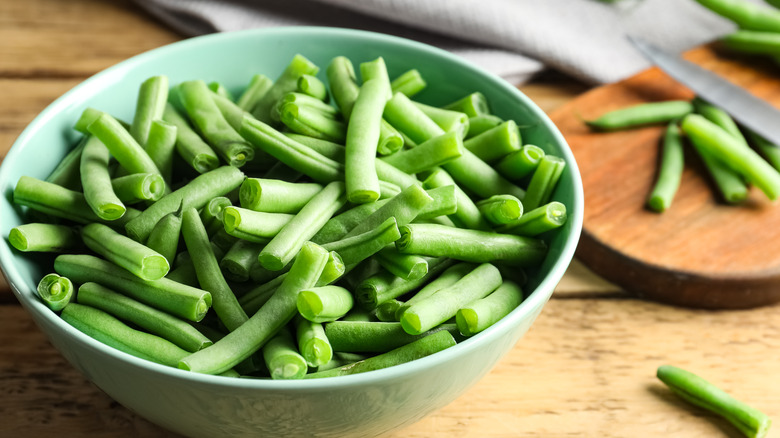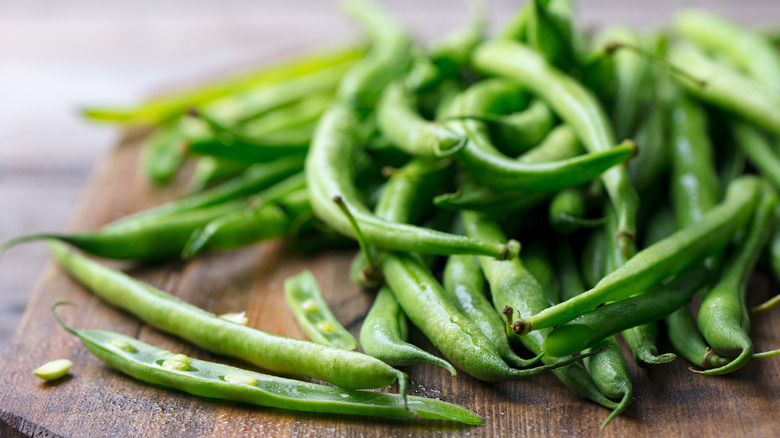Are Green Beans With Brown Spots Safe To Eat?
Whether you're using them in a classic casserole or a playful side dish, green beans are a staple in countless households. And as warmer weather arrives, you may be inclined to stock up on the popular vegetable at your local farmers' market. (Per Food Network, green bean season starts in May and lasts until October.) But what if, by the time you're ready to cook them, your fresh green beans have developed brown spots on their surface?
According to CookingLight, green beans displaying "a few brown spots here and there" are indeed safe to eat. However, the discoloration does mean that the produce is no longer at its freshest state — and that it is heading toward spoilage in the near future. As a result, green beans with these brown spots may not taste as delicious as their freshly picked counterparts. But, as the publication notes, they can and should still be used for cooking.
How to tell if green beans have actually gone bad
According to Eat By Date, beyond any brown spots you might see on older green beans, green beans that are in the process of spoiling will appear "limp and dry" and have a texture that feels "tough and rubbery." Notably, they are less likely to snap — as a fresh green bean should — when bent in half.
If your pods feel in any way wet or slimy, it means they're starting to "decompose," per LEAFtv. In that case, you'll want to simply throw away the beans and replace them with a fresh bunch. As UC San Diego's School of Medicine explains, you should look for green beans that are "slender" and "firm" with a "bright green color."
To maximize their lifespan, the school recommends storing fresh green beans in a "breathable bag" in the crisper of your fridge. This method should keep the beans fresh for up to seven days. Frozen green beans, meanwhile, typically last up to eight months in the freezer when sealed in an airtight container.

